update for swift 5, switch flow need a default condition.
import Foundation
import LocalAuthentication
extension LAContext {
enum BiometricType: String {
case none
case touchID
case faceID
}
var biometricType: BiometricType {
var error: NSError?
guard self.canEvaluatePolicy(.deviceOwnerAuthenticationWithBiometrics, error: &error) else {
// Capture these recoverable error through fabric
return .none
}
if #available(iOS 11.0, *) {
switch self.biometryType {
case .touchID:
return .touchID
case .faceID:
return .faceID
default:
return .none
}
}
return self.canEvaluatePolicy(.deviceOwnerAuthenticationWithBiometrics, error: nil) ? .touchID : .none
}
}
test case is in the below
// need to import LocalAuthentication in the calling file
// import LocalAuthentication
let currentType = LAContext().biometricType
print("biometry type > \(currentType)")
// biometry type > touchID
If you want to test in simulator, you need to enrolled touchId/faceId.
Simulator > Hardware > Touch ID/Face ID > Enrolled.



